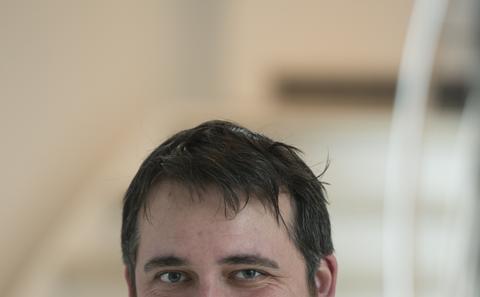Multifunctional Metal-organic Frameworks: Engineering Architectures for Increased Ability Seminar

- Time:
- 16:00
- Date:
- 20 September 2012
- Venue:
- Building 29, Rom 2075 Chemistry Highfield University of Southampton SO17 1BJ
For more information regarding this seminar, please email Dr Robert Raja at R.Raja@soton.ac.uk .
Event details
Part of the Molecular Assembly, Function and Structure Group Seminar Series
Metal-organic frameworks (MOFs) are currently one of the fastest-growing fields in chemistry and materials science, leading to innovation in fields as diverse as carbon capture and storage (CCS), gas separation, anomalous thermal expansion and molecular magnetism.
The majority of these compounds are optimised for a single purpose, but efficiency savings can be made by careful engineering of MOF architectures in order to endow these materials with multiple properties, making a single MOF useful in several fields at once. Furthermore, the interplay of these properties can allow us to gain new insights into the mechanisms at play in their function.
In collaboration with several groups, we have produced MOFs that combine two or more properties in novel ways to allow us to investigate the interactions of those properties. One example is a layered [Cu3(CO3)2]n2n− kagome metamagnet with an extremely low coercive field that utilises carbon capture in its synthesis and displays zero thermal expansion and reversible water sorption. Another is a family of 3D MOFs based on the novel chelating/bridging ligand 2,2´-dihydroxybiphenyl-4,4´-dicarboxylate (diol) that show selective solvent absorbance and metal resolvation and high thermal stability coupled with selective gas porosity. The resolvation of one of this series can be easily and accurately tracked using magnetic susceptibility techniques. The same ligand can be used to make a hugely versatile series of porous MOFs based around homometallic or heterometallic trimers with site-selective metal replacement and the ability to postsynthetically chelate transition metal ions.
These MOF families help to highlight a route to producing novel materials of great versatility to inorganic chemists.
2∙H2O; Right: selectivity of gas sorption of [Ni(diol)]](https://cdn.southampton.ac.uk/assets/imported/transforms/content-block/CB_RImg/B5580BC8B1504212A2A1400A6608FAA7/keene.JPG_SIA_JPG_fit_to_width_INLINE.jpg)
Speaker information
Dr Tony Keene, University of Adelaide . .